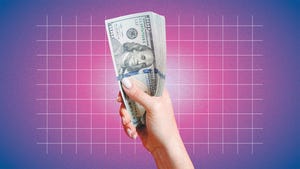
As experts predicted, rates for most CD terms across banks remained the same this week. CD rates increased for select short terms at some banks, including American Express, Bask Bank, Forbright, Marcus by Goldman Sachs and TIAA Bank.
Some of this week’s highlights include MYSB Direct pushing its CD rates past 5.00% this week. Its one-year CD now has a 5.37% APY and 5.20% APY for its 18-month. If you prefer a shorter term, its six-month CD has a 5.33% APY. Meanwhile, TIAA’s nine-month and one-year CD rates are at 5.25% and 5.00%, respectively.
But some banks lowered CD rates for long-terms. CFG dropped its rates for its one-year, 18-month, three- and five-year CDs. Synchrony also dropped its six-month CD down to 4.75%.
Here’s a look at the average CD rate for each term. Most banks offer well above the averages below, so it’s best to compare rates.
Savings rates remained the same — with one exception
For weeks, most banks have kept savings rates the same, with very few pushing rates higher weekly. Only one bank increased its savings rate — CIT now has a 4.95% APY on balances of $5,000 or more. Other savings rates remained the same.
And the average high-yield savings rate remains high, at 4.64% APY for now. And no matter what happens next with APYs, a savings account is still a good place to park money for a sinking or emergency fund to earn interest on your cash. While you may not earn as much interest if banks follow CIT’s lead and start lowering rates, you’ll still have the flexibility to deposit and withdraw funds without many hiccups.
Where savings rates will go next
The slight dip in savings account rates was not surprising to Christopher Day, CEO and founder of Days Global Advisors.
“It is highly likely that the high-yield savings account rates will drop,” said Day. The Federal Reserve’s next decision could make banks believe they don’t need to be as competitive. Therefore, most savings rates will remain high but will likely start to decrease, he explained.
But not all experts agree. Some think banks may continue to raise rates on high-yield savings accounts.
“Consumers should expect their savings rate to be steady and not vary widely within an institution over the next few weeks,” said Loreen Gilbert, CEO of Wealthwise Financial. However, since each institution sets its own savings rates, it’s important to shop around, advised Gilbert. Banks also raise rates to remain competitive and attract new customers and deposits.
While savings rates could still climb a bit higher depending on the Fed’s next move or if a bank is trying to compete with other top names, most experts agree that savings rates have reached a peak, and are headed for a downward trajectory. Although, the Fed is not likely to cut rates until 2024, many banks are likely to start reducing savings rates before then, Gilbert added.
Other savings options to consider
Experts agree that savings rates will likely drop once the Fed begins cutting rates, said Fopiano. So if you’re worried about an unpredictable return on your money, there are other places experts recommend stashing your savings.
Since the bank failures of Silicon Valley Bank and First Republic, Fopiano has noticed more people moving their money into other savings vehicles such as brokerage money market funds. “This has made many banks pretty deposit-hungry,” she said, which explains why some banks are continuing to raise rates to remain competitive. “Online banks with no brick-and-mortar expenses may offer rates that are more attractive than their traditional counterparts for a longer period of time,” said Fobiano.
Depending on your time horizon, a long-term savings option, such as a three- or five-year CD can help you lock in a competitive savings rate now that lasts throughout your entire CD term. But despite appealing rates, you should only opt for this savings option if you can “afford the lock-ups that CDs entail,” said Fopiano. Treasury bills, like I bonds, are another safe option to diversify your portfolio and offer an attractive yield.
Keep in mind that some savings options are more flexible or liquid than others. CDs require you to lock up your money for a set term — and if you need to withdraw early, you’ll typically pay an early withdrawal penalty. Treasury bonds also require locking up your money for a period of time without paying early withdrawal fees. While you can’t lock in a rate with a high-yield savings account, you can still earn a good savings rate right now, and access your funds when you need them.
But remember, there’s more to saving than earning interest. For instance, if you earn cash tips from a side hustle and want to deposit the funds, you won’t be able to make regular contributions to an I bond or a CD. Or, if you need to save money and make purchases regularly, you may choose a money market account for its similar checking account features, like debit card access.
The bottom line
Savings rates may decrease within the next year, but that doesn’t mean a high-yield savings account should no longer be a good place for your savings. Start by thinking about your goal for your money, when you’ll need it and whether you may need quick access to these funds. If you already have an emergency fund, it might be the right time to open an additional savings account, like a CD or I bond, to earn a competitive interest rate on a more long-term savings goal.
The Time for Sky-High Savings Rates Is Winding Down, Experts Say – CNET
Source: Media Star Philippines


0 Comments